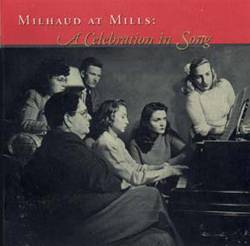Description
LISZT: Piano Concerto No. 2 in A Major. Philharmonic~Symphony Orchestra (NY), Dimitri Mitropoulos, 5 Sept. 1943; SCHUMANN: Piano Concerto in a Minor, Op. 54. Philharmonic~Symphony Orchestra (NY), Victor De Sabata, 18 March 1951; WEBER: Konzertstück in f Minor, op.79 J282. NBC SO (NY), Erich Kleiber, 20 Dec. 1947. Sound restoration (2005) by Maggi Payne, booklet note by Bryce Morrison. Total time 1:10:25 AAD. UPC # 0 17685-11742 8
Sound Clips (MP3):
2. Liszt- Piano Concerto No. 2 in A major, S. 125 (LW H6)- 2. Allegro moderato
4. Liszt- Piano Concerto No. 2 in A major, S. 125 (LW H6)- 4. Allegro animato
6. Schumann- Piano Concerto in A minor, Op. 54- 2. Intermezzo- Andantino grazioso
7. Schumann- Piano Concerto in A minor, Op. 54- 3. Allegro vivace
8. Konzertstück for piano & orchestra in F minor, J. 282 (Op. 79)
Bryce Morrison writes in his note: Arrau's "live" performances of music by Liszt, Schumann and Weber on this CD form a testament to his earlier artistry, to his stylistic ease and verve at the height of his powers. Martin Krause had passed on his veneration for Liszt, a composer who played a central role in Arrau's repertoire throughout his life. But it is when you listen to his 1943 performance of the Second Concerto given with Mitropoulos that you realise the extent to which Arrau's playing altered over the years. This was a time of flashing fingers and an unapologetic virtuoso fire that could ignite and engulf every page. Yet such pianistic dazzle and opulence are complemented by the richest vein of poetry. What generosity of spirit in the central Allegro moderato. The last pages are overwhelming in their strength and mobility. Here is no apology for a wholly Lisztian bombast and theatricality but a burning belief in every note and phrase. Again, the Schumann Concerto, this time with de Sabata and recorded eight years later, is as brilliant as it is affecting. This is particularly evident when you listen to Arrau's later commercial recordings (with Galliera, von Dohnanyi and Colin Davis). There, the reflexes have slowed and the manner is, relatively speaking, more considered than vertiginous, something notably true of the finale. In 1951 everything is kept on the qui vivre. Finally, Weber's programmatic and scintillating Konzertstück, music that moves from a solemn beginning to a riotous conclusion. Again, from Arrau nothing is taken for granted, everything is deeply engaged and in the final Presto giocoso every difficulty is tossed aside with a fluency that can make a mockery of too many of today's pianists. Here, then, are performances of a consuming grandeur and vision captured "on the wing." There have been few pianists of Arrau's stature and fewer still who could so radiantly declare, "When I play I am in ecstasy, a creative ecstasy which I wouldn't miss for anything. That is what I live for."








Reviews
There are no reviews yet.